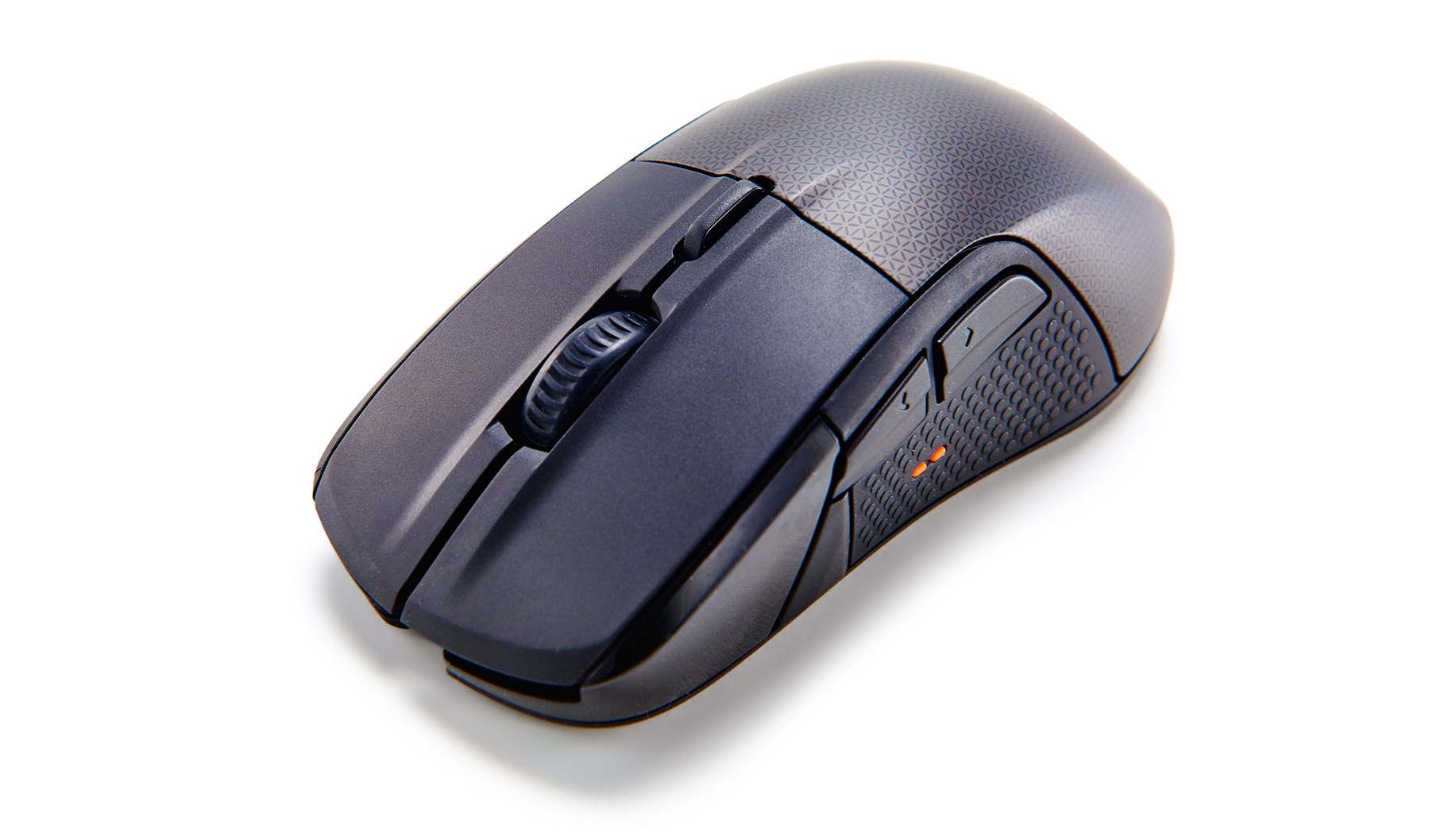For
- Fantastic optical sensor
- Strong ergonomics
- Nifty customizable OLED display
- Classy design, and strong software
Against
- A touch pricey
PC Gamer's got your back
SteelSeries: a legend in the hardware world. Its reputation is only trumped by its own new products supplanting itself on the way to the top of the peripheral hill. The company is neither the huge production foundries of Logitech, churning out hundreds of thousands of products each year, nor the niche-audience-slaying design houses of Mionix or BenQ Zowie, but a happy mix of the two. And that balance speaks volumes. With a legacy encompassing products such as the Sensei ambidextrous gaming mouse, the HV3 lineup of headphones, and even the first ever Rival, SteelSeries has definitely cemented its place in our hearts when it comes to those additional little input methods we use on our prized systems.

That said, mouse development seems to have come to a grinding halt, certainly as far as innovation is concerned. With high-dpi optical sensors now perfected, RGB lighting mastered, and a plethora of mice in a variety of shapes, sizes, and button complements, it’s hard to imagine where the pointy rodent will go next. Well, that’s what we thought, until two mice in particular caught our attention in the last 12 months: Mionix’s vital-statistics- tracking Naos QG, and SteelSeries’s extravagant flagship, the Rival 700. We didn’t manage to get the latter into the mag at the time—not for lack of trying, mind you. We initially had our hands on a sample in the office way back in April 2016, when we thought it was absolutely fantastic. However, due to SteelSeries’s concerns with the braided cables being too “grippy,” the company (frustratingly) delayed the release, and took the mouse back to the drawing board for another four months, to redesign the cable—yep, SteelSeries is that serious.
Sensor: Optical
Sensitivity: 100-16,000 DPI
Sensor Model: PixArt Technologies PMW3360
Polling Rate: 125Hz, 250Hz, 500Hz, 1,000Hz
Programmable buttons: 7
LEDs: Two-zone—16.8 million colors
Cable lengths: 3ft and 6ft
Weight: 4.8oz
Price: $80
So, here we are at last, with the mythical beast sitting in front of us. The SteelSeries Rival 700. We rarely speak about the unboxing experience in our reviews, but with the Rival, it’s something else. You get a small rectangular box, split diagonally. Opening it up on its hinge reveals nothing more than the mouse itself and a small cardboard box. You’d be forgiven at this point for thinking that the Rival 700 is a wireless mouse—it’s only when you dig a little deeper that you begin to understand what’s going on. In short, the choice of cable rests with the consumer. You get one six-foot braided cable, one six-foot plastic-coated cable, plus a plastic-coated three-foot cable. On top of that, you can also swap out the cover on the rear belly of the mouse to either a glossy black or an anti-sweat soft-touch variant instead ($15 for the pack).
And then, of course, there’s the sensor. By default, the Rival 700 comes with an optical PixArt 3360, pumping out a whopping 16,000 dpi if needed, with zero hardware acceleration. However, if optical is simply not your jam, you can grab yourself the PixArt 9800 laser module instead for $25. Simply unscrew the four Phillips-head screws underneath, place your new sensor inside, and wham-bam- thank-you-ma’am, you’re all set.
Customization aside, there’s a few little extras that really make the Rival 700 stand out. You can’t quite seen the OLED screen in the above shot, but it enables you to slap any number of small GIFs or images on the side of the mouse, alongside in-game notifications—not particularly useful, granted, as you should be looking at the screen. But what’s most impressive is the inclusion of rumble feedback—you can assign tactile feedback to any of the seven buttons, in a variety of ways. Although not hugely useful for the two main buttons, having a tactile response from whichever button you press helps train your brain to use buttons that you would otherwise get confused about, making it one neat and surprisingly useful addition. The vibrations themselves are exceedingly precise, and don’t cause any jitter in your mouse positioning. We bound this feature to one of our focus buttons in Sniper Elite V3, and had no trouble picking off targets at our usual rate.
All in all, the SteelSeries Rival 700 is a well-tuned, customizable gaming mouse at the pinnacle of its field, designed to incorporate absolutely everything in today’s gaming mouse market. It does cost $80, which is on the high-end for a pixel-pointer, but it’s well worth it in our eyes.
After graduating from the University of Derby in 2014, Zak joined the PC Format and Maximum PC team as its resident staff writer. Specializing in PC building, and all forms of hardware and componentry, he soon worked his way up to editor-in-chief, leading the publication through the covid dark times. Since then, he’s dabbled in PR, working for Corsair for a while as its UK PR specialist, before returning to the fold as a tech journalist once again.
He now operates as a freelance tech editor, writing for all manner of publications, including PC Gamer, Maximum PC, Techradar, Gamesradar, PCGamesN, and Trusted Reviews as well. If there’s something happening in the tech industry it’s highly likely Zak has a strong opinion on it.


